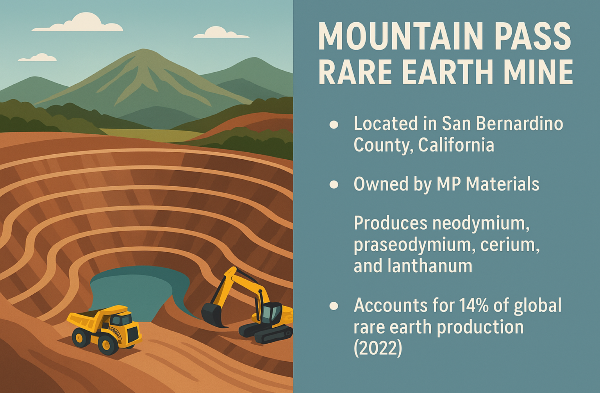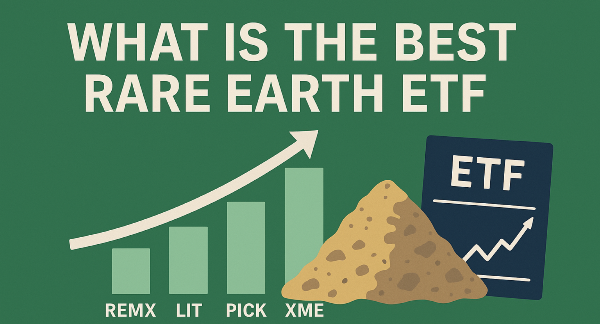Introduction
Large-cap stocks play a significant role in dividend investing by offering investors stability and consistent returns. These companies, often industry leaders with strong financial foundations, have the ability to distribute earnings to shareholders through regular dividend payments. Dividends are an essential component of wealth-building strategies, providing passive income while allowing for reinvestment to enhance long-term portfolio growth. By selecting companies with solid dividend histories, investors can achieve financial security while benefiting from compounding returns over time.
Understanding Large-Cap Dividend Stocks
Large-cap stocks are companies with a market capitalization of ten billion dollars or more, often recognized for their financial stability and industry leadership. Businesses that consistently pay high dividends typically have strong revenue streams, predictable earnings, and a commitment to returning capital to shareholders. These firms operate in sectors with steady demand and long-term profitability, allowing them to sustain dividend payments even during economic downturns. Investing in dividend-paying large-cap stocks provides benefits such as reliable income generation, portfolio diversification, and lower volatility compared to smaller companies.
Top Large-Cap Stocks with High Dividends
Several large-cap companies offer high dividend yields, making them attractive to income-focused investors. Companies such as AbbVie, Chevron, Enbridge, Pfizer, and Verizon consistently provide strong dividend payouts. These firms have established themselves as reliable dividend payers due to their financial stability and commitment to shareholder returns. Analyzing financial performance and dividend history helps investors assess the sustainability of payouts. Historical dividend data provides insight into a company's ability to maintain or grow its payouts over time. Certain sectors are known for offering high-dividend stocks, including energy, utilities, finance, and consumer staples.
Industry Breakdown of High-Dividend Large-Cap Stocks
The energy sector is home to several oil and gas companies that consistently provide strong dividend payouts. These firms benefit from long-term capital efficiency and strategic investments, ensuring reliable dividend distributions. Investors seeking high-yield energy stocks often look for companies with low breakeven costs and strong cash flow generation. The financial sector includes banks and insurance firms that offer consistent dividends. Institutions such as JPMorgan Chase, Bank of America, and U.S. Bancorp have historically provided stable dividend payments due to their strong balance sheets and profitability.
Consumer goods companies are known for their reliable dividend payments, as they operate in industries with steady demand. The healthcare sector features pharmaceutical companies with attractive dividend yields. Firms such as Pfizer, AbbVie, and Johnson & Johnson have a strong history of dividend payments.
Factors Influencing Dividend Payments
Company profitability and cash flow management play a crucial role in determining dividend payments. A company with stable revenue streams and efficient financial management can allocate a portion of its profits to shareholders while maintaining operational growth. Economic conditions and interest rate fluctuations significantly impact dividend policies. Inflation and monetary policy decisions also influence dividend strategies. Industry trends and regulatory impacts shape how companies approach dividend payments. Businesses operating in sectors with stable demand and predictable earnings tend to offer consistent dividends.
Risks and Considerations in Large-Cap Dividend Investing
Potential dividend cuts and financial instability are key risks in large-cap dividend investing. Companies may reduce or eliminate dividends due to declining earnings, increased debt, or shifting business strategies. A high payout ratio can indicate that a company is distributing most of its profits, leaving little room for reinvestment or financial flexibility. Economic downturns can significantly impact dividend payments, as companies often prioritize financial stability over shareholder distributions.
Historically, dividend payments have been less volatile than stock prices, but they are still susceptible to economic cycles. Balancing dividend yield with stock price appreciation is crucial for long-term investment success. While high dividend yields can provide steady income, they may also signal underlying financial issues or declining stock prices.
Strategies for Investing in High-Dividend Large-Cap Stocks
Long-term and short-term dividend investing approaches cater to different financial goals and risk tolerances. Long-term dividend investing focuses on companies with a history of stable and growing dividend payments, allowing investors to benefit from compounding returns over time. Short-term dividend investing, on the other hand, involves purchasing stocks with high yields for immediate returns, often requiring active management to maximize gains. Investors must assess their risk tolerance and investment horizon when choosing between these approaches.
Diversification is essential for building an income-focused portfolio that minimizes risk while maximizing returns. Investors can achieve diversification by selecting dividend-paying stocks across various sectors, such as energy, finance, healthcare, and consumer goods. Reinvesting dividends is a powerful strategy for compound growth, allowing investors to maximize returns over time. Dividend reinvestment plans (DRIPs) automatically reinvest earnings into additional shares, increasing the overall investment value.
Case Studies of Successful Large-Cap Dividend Stocks
Several large-cap companies have demonstrated strong dividend growth over the years, making them attractive to income-focused investors. Companies such as MSCI Inc., Hershey, and Procter & Gamble have consistently increased their dividend payouts, reflecting their financial stability and commitment to shareholder returns. These firms have maintained steady earnings growth, allowing them to sustain and expand their dividend distributions.
Historical performance and investor returns indicate that dividend-paying stocks can provide long-term stability and wealth accumulation. Over the decades, stocks with consistent dividend growth have outperformed broader market indexes during economic downturns. Investment returns from dividend stocks have historically contributed significantly to overall portfolio performance, offering both income and capital appreciation.
Do All Large-Cap Companies Pay Dividends?
Not all large-cap companies pay dividends, as some prioritize reinvesting earnings to fuel expansion and innovation. Businesses in high-growth industries, such as technology and biotechnology, often choose to reinvest profits into research, acquisitions, or market expansion rather than distributing them to shareholders. This strategy allows them to enhance their competitive edge and increase stock value over time. Growth-focused companies reinvest earnings to strengthen their market position and drive future profitability.
Firms in sectors with rapid technological advancements or evolving consumer demands often allocate profits toward product development, infrastructure, or strategic acquisitions. Investors can identify dividend-paying large-cap stocks by analyzing financial reports, dividend yield metrics, and payout ratios. Resources such as brokerage platforms, financial news sites, and stock screeners provide insights into companies with consistent dividend histories.
Conclusion
Investing in high-dividend large-cap stocks can provide stability, passive income, and long-term portfolio growth. While many established companies offer consistent dividend payouts, others prioritize reinvesting earnings to drive expansion and innovation. By understanding dividend yield, payout ratios, industry trends, and financial stability, investors can make informed decisions and build a diversified portfolio suited to their financial goals.
Recognizing the risks associated with dividend cuts and market volatility ensures a balanced approach to dividend investing. With careful selection and reinvestment strategies, investors can achieve sustainable wealth accumulation and financial security over time.




























Introduction
Large-cap stocks play a significant role in dividend investing by offering investors stability and consistent returns. These companies, often industry leaders with strong financial foundations, have the ability to distribute earnings to shareholders through regular dividend payments. Dividends are an essential component of wealth-building strategies, providing passive income while allowing for reinvestment to enhance long-term portfolio growth. By selecting companies with solid dividend histories, investors can achieve financial security while benefiting from compounding returns over time.
Understanding Large-Cap Dividend Stocks
Large-cap stocks are companies with a market capitalization of ten billion dollars or more, often recognized for their financial stability and industry leadership. Businesses that consistently pay high dividends typically have strong revenue streams, predictable earnings, and a commitment to returning capital to shareholders. These firms operate in sectors with steady demand and long-term profitability, allowing them to sustain dividend payments even during economic downturns. Investing in dividend-paying large-cap stocks provides benefits such as reliable income generation, portfolio diversification, and lower volatility compared to smaller companies.
Top Large-Cap Stocks with High Dividends
Several large-cap companies offer high dividend yields, making them attractive to income-focused investors. Companies such as AbbVie, Chevron, Enbridge, Pfizer, and Verizon consistently provide strong dividend payouts. These firms have established themselves as reliable dividend payers due to their financial stability and commitment to shareholder returns. Analyzing financial performance and dividend history helps investors assess the sustainability of payouts. Historical dividend data provides insight into a company's ability to maintain or grow its payouts over time. Certain sectors are known for offering high-dividend stocks, including energy, utilities, finance, and consumer staples.
Industry Breakdown of High-Dividend Large-Cap Stocks
The energy sector is home to several oil and gas companies that consistently provide strong dividend payouts. These firms benefit from long-term capital efficiency and strategic investments, ensuring reliable dividend distributions. Investors seeking high-yield energy stocks often look for companies with low breakeven costs and strong cash flow generation. The financial sector includes banks and insurance firms that offer consistent dividends. Institutions such as JPMorgan Chase, Bank of America, and U.S. Bancorp have historically provided stable dividend payments due to their strong balance sheets and profitability.
Consumer goods companies are known for their reliable dividend payments, as they operate in industries with steady demand. The healthcare sector features pharmaceutical companies with attractive dividend yields. Firms such as Pfizer, AbbVie, and Johnson & Johnson have a strong history of dividend payments.
Factors Influencing Dividend Payments
Company profitability and cash flow management play a crucial role in determining dividend payments. A company with stable revenue streams and efficient financial management can allocate a portion of its profits to shareholders while maintaining operational growth. Economic conditions and interest rate fluctuations significantly impact dividend policies. Inflation and monetary policy decisions also influence dividend strategies. Industry trends and regulatory impacts shape how companies approach dividend payments. Businesses operating in sectors with stable demand and predictable earnings tend to offer consistent dividends.
Risks and Considerations in Large-Cap Dividend Investing
Potential dividend cuts and financial instability are key risks in large-cap dividend investing. Companies may reduce or eliminate dividends due to declining earnings, increased debt, or shifting business strategies. A high payout ratio can indicate that a company is distributing most of its profits, leaving little room for reinvestment or financial flexibility. Economic downturns can significantly impact dividend payments, as companies often prioritize financial stability over shareholder distributions.
Historically, dividend payments have been less volatile than stock prices, but they are still susceptible to economic cycles. Balancing dividend yield with stock price appreciation is crucial for long-term investment success. While high dividend yields can provide steady income, they may also signal underlying financial issues or declining stock prices.
Strategies for Investing in High-Dividend Large-Cap Stocks
Long-term and short-term dividend investing approaches cater to different financial goals and risk tolerances. Long-term dividend investing focuses on companies with a history of stable and growing dividend payments, allowing investors to benefit from compounding returns over time. Short-term dividend investing, on the other hand, involves purchasing stocks with high yields for immediate returns, often requiring active management to maximize gains. Investors must assess their risk tolerance and investment horizon when choosing between these approaches.
Diversification is essential for building an income-focused portfolio that minimizes risk while maximizing returns. Investors can achieve diversification by selecting dividend-paying stocks across various sectors, such as energy, finance, healthcare, and consumer goods. Reinvesting dividends is a powerful strategy for compound growth, allowing investors to maximize returns over time. Dividend reinvestment plans (DRIPs) automatically reinvest earnings into additional shares, increasing the overall investment value.
Case Studies of Successful Large-Cap Dividend Stocks
Several large-cap companies have demonstrated strong dividend growth over the years, making them attractive to income-focused investors. Companies such as MSCI Inc., Hershey, and Procter & Gamble have consistently increased their dividend payouts, reflecting their financial stability and commitment to shareholder returns. These firms have maintained steady earnings growth, allowing them to sustain and expand their dividend distributions.
Historical performance and investor returns indicate that dividend-paying stocks can provide long-term stability and wealth accumulation. Over the decades, stocks with consistent dividend growth have outperformed broader market indexes during economic downturns. Investment returns from dividend stocks have historically contributed significantly to overall portfolio performance, offering both income and capital appreciation.
Do All Large-Cap Companies Pay Dividends?
Not all large-cap companies pay dividends, as some prioritize reinvesting earnings to fuel expansion and innovation. Businesses in high-growth industries, such as technology and biotechnology, often choose to reinvest profits into research, acquisitions, or market expansion rather than distributing them to shareholders. This strategy allows them to enhance their competitive edge and increase stock value over time. Growth-focused companies reinvest earnings to strengthen their market position and drive future profitability.
Firms in sectors with rapid technological advancements or evolving consumer demands often allocate profits toward product development, infrastructure, or strategic acquisitions. Investors can identify dividend-paying large-cap stocks by analyzing financial reports, dividend yield metrics, and payout ratios. Resources such as brokerage platforms, financial news sites, and stock screeners provide insights into companies with consistent dividend histories.
Conclusion Investing in high-dividend large-cap stocks can provide stability, passive income, and long-term portfolio growth. While many established companies offer consistent dividend payouts, others prioritize reinvesting earnings to drive expansion and innovation. By understanding dividend yield, payout ratios, industry trends, and financial stability, investors can make informed decisions and build a diversified portfolio suited to their financial goals.
Recognizing the risks associated with dividend cuts and market volatility ensures a balanced approach to dividend investing. With careful selection and reinvestment strategies, investors can achieve sustainable wealth accumulation and financial security over time.